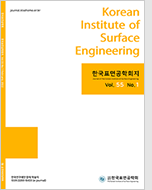
- Past Issues
- e-Submission
-

2021 Impact Factor 1.766
5-Year Impact Factor 1.674
Editorial Office
- +82-2-563-0935
- +82-2-558-2230
- submission@kisehome.or.kr
- https://www.kisehome.or.kr/

2021 Impact Factor 1.766
5-Year Impact Factor 1.674
The Korean Journal of Internal Medicine 2022;37(5):885-894. Published online: July 29, 2022
DOI : 10.5695/JSSE.2022.55.3.133
This manuscript was contributed by Korean Association for the Study of Intestinal Diseases.
Received April 9, 2022 Accepted May 2, 2022
Copyright © 2022 The Korean Association of Internal Medicine
This is an Open Access article distributed under the terms of the Creative Commons Attribution Non-Commercial License (http://creativecommons.org/licenses/by-nc/4.0/) which permits unrestricted noncommercial use, distribution, and reproduction in any medium, provided the original work is properly cited.
Inflammatory bowel disease (IBD) refers to a group of disorders, including Crohn’s disease and ulcerative colitis, that exhibit similar but distinct manifestations. These diseases are characterized by refractory and chronic inflammation of the bowel. IBD is usually accompanied by severe symptoms. When a patient presents with suspected IBD, physicians encounter various challenges in terms of diagnosis and treatment. In addition, given such characteristics, the associated medical expenses gradually increase. Although IBD was formerly known as a disease of Western countries, the incidence and prevalence are increasing in Korea. Korean investigators have accumulated a great deal of knowledge about the regional characteristics and epidemiology of the disease, especially via well-organized, joint cohort studies. Against this background, this article describes the epidemiology of IBD in Korea compared to that in the West. In addition, an overview of the pathophysiology of the disease is provided, focusing on the latest results.
Keywords nflammatory bowel diseases; Korea; Epidemiology; Pathophysiology
Inflammatory bowel disease (IBD) is difficult to treat and is frequently accompanied by severe and persistent complications. The burden of the disease in Korea is predicted to increase as the prevalence continues to rise [1,2]. IBD usually develops in young adults and frequently causes problems related to immunosuppression; the associated medical costs are high [3,4]. Korea has seen a steep increase in the number of patients with IBD during the last three decades because of recent industrialization, as have other Asian countries [5–7]. However, Korean patients exhibit several distinct characteristics compared to other Asian patients. Adoption of Western guidelines is difficult, because IBD treatment in Korea requires special clinical consideration of regional differences in infectious diseases [8–10]. However, well-designed, epidemiological cohort studies have demonstrated several characteristics of Korean patients with IBD that may be useful when seeking to understand the condition [7–9,11,12]. The results of these studies provide valuable fundamental data allowing improvements in IBD care using both the Internet and IBD center-oriented management [13,14]. This article summarizes recent findings on the epidemiology of IBD in Korea (Table 1) and describes recent advances in our understanding of the underlying pathophysiologic mechanism (Table 2).
Summary of the epidemiological features of IBD in Korea
Download TableDocument is current Any future updates will be listed below

About CrossMark